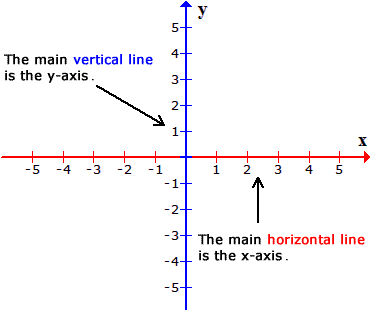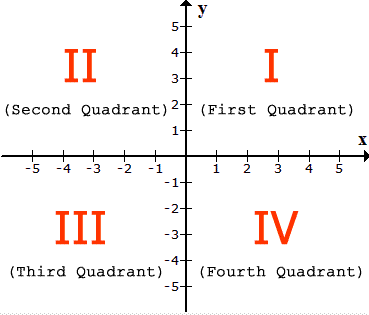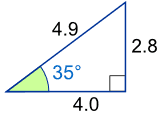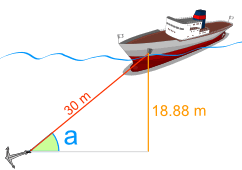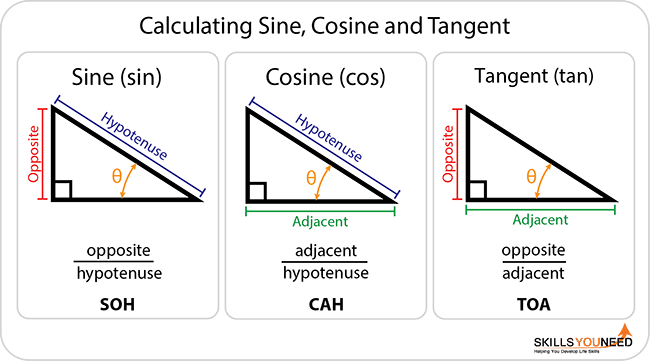In this blog post 3 big questions are answered,
- Discuss the greatest advancement with regards to your topic and provide examples.
- How is this form of biotechnology best used?
- How is this form of biotechnology changing the world as we continue to advance towards the future?
1. Vaccines:
Before, viruses and fatal plagues contaminated Earth’s population, injuring and eventually killing millions of people. Medicine was more of a spiritual thing back then and only a few people had a sliver of ideas on how the body worked. Now, we can provide aid and assistance to people that contract these diseases with vaccines. Vaccines are a type of medicine that helps your body build immunity to certain sicknesses. Scientists use gene therapy to create these liquid protectors by using vectors. Vectors are organisms that carry pathogens (microorganisms that can cause disease) and give those pathogens to other living things. This is helpful because by using vectors, scientists can implant a certain virus or strand of DNA into it and put that into the human body which helps build protective cells for that specific illness. To transport the DNA to the targeted cell within the body, vectors use capsids (virus shell) to transmit a message to the targeted cell on what to do to protect the body. Without this technology, so many more lives would have been lost because of viruses like COVID-19 and what is a global pandemic, could have become global extinction.
1. Hormones:
Recombinant DNA or rDNA is the method used to make hormones by combining two or more DNA molecules to create a hybrid. The techniques used during the rDNA process have helped scientists in identifying what proteins are used in hormones to create more and different kinds. Hormones are used to coordinate processes within the body and can alter growth, fertility, and metabolism. rDNA involves extracting a piece of DNA structure that contains the trait or traits wanted and implanting it into the genome. A genome is in our cells and are the instructions needed to create us and what we need. There are 5 steps involved to create these hormones.
- Get the desired trait/genetic material on its own
- Make a spot for it in the vector (cut out unwanted material)
- Amplify the one gene into millions of the same gene
- Join the vector and gene/DNA together
- Insert DNA into host (once inserted it gets multiplied)
That DNA is then put into vectors to deliver them to the targeted cell to be multiplied inside the body or to be displayed. This DNA can be engineered to replicate itself inside the body when put in bacteria or yeast. With the DNA inside the bacteria, it can then tell the bacteria to copy itself to make more cells and distribute them throughout the body. This process is called DNA cloning or recombinant DNA. Because of the demand for hormones, this process and technology greatly benefits people all around the world.
1.Antibiotics
Antibiotics are drugs or medication used to kill bacterial infections within the body or delay the effects of it. These drugs are created in a lab where scientists use some of Earth’s resources like fungi who are good at dominating and killing their competition within their habitat and and within their food chain.
2.Vaccines
Vaccines are used to help people by using a small or dead strain of the virus to fight the virus. In some vaccines they use mRNA to fight the virus. With covid 19 there is multiple vaccines some with a strain of covid and some mRNA vaccines used to kill the virus.
2.Antibiotics
Antibiotics are used to help people that are hurt or sick. Antibiotics are made in large amounts they do this by cultivating and manipulating fungal cells.
2.Hormones
Hormones are made to help people with there mood or get them stronger with steroids. Scientists have known about stuff like growth hormones since 1920 but they only started using them around 1963.
3.Future of Antibiotics:
Transcription, the initial stage in gene expression, is carried out by the enzyme RNA polymerase (RNAP), which is controlled by a number of protein transcription factors. RNAP and its related transcription factors are highly conserved across the bacterial domain, making them ideal targets for the development of broad-spectrum antibacterial agents. Despite the fact that there are countless antibiotics on the market, only two series have been approved to target transcription. The high-resolution identification of the three-dimensional structures of RNAP and transcription complexes during the last 15 years has reignited interest in using rational structure-based techniques to target this critical pathway for antibiotic development.
Because of the rapid rise of high-resolution structural knowledge on RNAP and transcription complexes that is becoming available, more targeted techniques are now conceivable. More rational procedures that require the meticulous building of templates (pharmacophores) around which inhibitors are formed can be used to explore chemical space for the design and development of novel inhibitor molecules. These methods can be utilised to develop/improve drugs that target RNAP’s enzymatic activity as well as protein-protein interactions.
Antibiotics originating from natural products (e.g., penicillin) and synthetic chemicals both have a place in history (e.g., fluoroquinones). What matters most is government and industry commitment and investment to guarantee that all options are thoroughly investigated to ensure the continuous discovery and development of crucial medications. One area where there is a lot of unexplored potential is bacterial transcription targeting.
3.Future of Vaccines:
For more than 25 years, university laboratories have been investigating the use of RNA rather than viruses to strengthen the body’s immune system. According to the researchers, mRNA can be utilised to make a range of vaccinations and medicines in less time and for less money than existing approaches. In the early 1990s, mRNA emerged as a viable alternative to traditional vaccine development. mRNA is a molecule that serves as a blueprint for cells to construct certain proteins. Proteins are essential for a viral infection’s success because they allow the virus to multiply once it has attached to a cell. The vaccines’ theory is that mRNA instructs a cell to produce a protein used by a specific virus, triggering an immune response that strengthens the body’s ability to fight the virus. Throughout the 1990s and early 2000s, the idea showed promise in lab studies and animal trials, with researchers attempting to develop cancer medicines and vaccinations to defend against viral infections like influenza, Ebola, and SARS (severe acute respiratory syndrome). The technology’s effectiveness was hampered by a number of stubborn flaws. Getting mRNA into a cell was challenging, as mRNA generated acute inflammation and was swiftly eliminated by the body. Using synthetic RNA that the body’s immune system doesn’t recognise and encasing it in lipid nanoparticles (fat bubbles) that easily slide into cells, mRNA researchers consider this a milestone. Human trials for mRNA vaccines against HIV, influenza, Zika, and rabies began in 2017. A pandemic can strike at any time, but the advent of COVID-19 in December 2019 provided an ideal opportunity for mRNA research. Just as the world sorely needed a vaccine to be created faster than ever, the technology was ready for a real-world test. Malaria, tuberculosis, hepatitis B, and cystic fibrosis are just a few of the diseases that researchers believe will benefit from mRNA vaccines and therapies in the future. Scientists are still looking into mRNA therapies for a variety of cancers. According to University of Texas MD Anderson Cancer Center experts, mRNA tells a patient’s cells to generate protein fragments depending on a tumor’s genetic alterations, causing the immune system to seek out other cells that have the mutant proteins and target the tumour cells that remain. At the same time, the researchers caution against setting unrealistic expectations. Although confirmed adverse effects from COVID-19 mRNA vaccinations have been modest in all but a few cases thus far, there is still much to learn. To gain public acceptance, effective education regarding the negative effects and misinformation, such as that mRNA can modify someone’s genetic composition, will be required. Other issues exist outside of the realm of science, few diseases can elicit the kind of worldwide response that COVID-19 did in terms of finance, commitment of top-tier scientific resources, collaboration, and public support.
3.Future of Hormones:
The reduction of sex steroid hormones with age has been linked to an increased risk of Alzheimer’s disease (AD) in both men and women. The principal female hormone oestrogen and the primary male hormone testosterone have a number of preventive effects in the brain that are relevant to the prevention of Alzheimer’s disease, such as increasing neuron survival, reducing – amyloid buildup, and reducing tau hyperphosphorylation. As a result, it’s been proposed that a rapid decrease of these hormones, whether due to menopause or normal ageing, can increase vulnerability of a AD pathogenesis. The discovery of selective oestrogen and androgen receptor modulators may be one of the most promising translational tools thus far. However, more study is needed to improve these and other integrative approaches in order to successfully use hormone therapy in both men and women to postpone, prevent, or treat Alzheimer’s disease.
Works Cited
9 September 2020. Government of Canada. Web. 4 April 2022. <https://www.canada.ca/en/health-canada/services/drugs-health-products/biologics-radiopharmaceuticals-genetic-therapies/activities/fact-sheets/regulation-vaccines-human-canada.html>.
Boundless, General Microbiology at. 7.1H: Production of Vaccines, Antibiotics, and Hormones. 5 March 2021. Web. 1 April 2022. <https://bio.libretexts.org/Bookshelves/Introductory_and_General_Biology/Book%3A_General_Biology_(Boundless)/17%3A_Biotechnology_and_Genomics/17.1%3A_Biotechnology/17.1H%3A_Production_of_Vaccines_Antibiotics_and_Hormones#title>.
Boyle, Patrick. mRNA technology promises to revolutionize future vaccines and treatments for cancer, infectious diseases. 29 March 2021. Web. 4 April 2022. <https://www.aamc.org/news-insights/mrna-technology-promises-revolutionize-future-vaccines-and-treatments-cancer-infectious-diseases>.
Carroll, Jenna C. and Emily R. Rosario. The potential use of hormone-based therapeutics for the treatment of Alzheimer’s disease. 9 January 2012. Web. 8 April 2022. <https://pubmed.ncbi.nlm.nih.gov/22329650/>.
Kabir. Vaccines, Antibiotics, and hormones. 8 may 2020. Web. 30 March 2022. <https://myriverside.sd43.bc.ca/kabirm2018/2020/05/08/vaccines-antibiotics-and-hormones/>.
Ma, Cong, Xaio Yang and Peter J. Lewis. Bacterial Transcription as a Target for Antibacterial Drug Development. 13 January 2016. Web. 8 April 2022. <https://www.ncbi.nlm.nih.gov/pmc/articles/PMC4771368/>.
Organization, World Health. How are vaccines developed. 8 December 2020. Web. 4 April 2022. <https://www.who.int/news-room/feature-stories/detail/how-are-vaccines-developed>.
Petechuk, David. Genetics. Ed. Katherine H., Nemeh and Jacqueline L. Longe. 2021. Gale, a Cengage Company. Web. 30 March 2022. <https://go.gale.com/ps/retrieve.do?tabID=Reference&resultListType=RESULT_LIST&searchResultsType=MultiTab&hitCount=2&searchType=BasicSearchForm¤tPosition=1&docId=GALE%7CCX8124401091&docType=Topic+overview&sort=Relevance&contentSegment=ZXAR-VRL&prodId>.
Table 2 Clinical trials with mRNA vaccines against infectious diseases. 29 March 2021. Nature Portfolio. Web. 4 April 2022. <https://www.nature.com/articles/nrd.2017.243/tables/2>.
Vectors 101. 11 May 2021. Web. 4 April 2022. <https://patienteducation.asgct.org/gene-therapy-101/vectors-101>.
